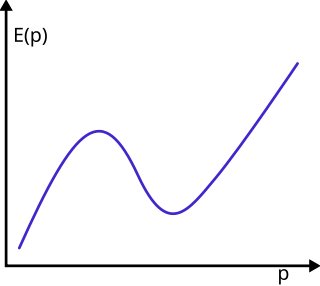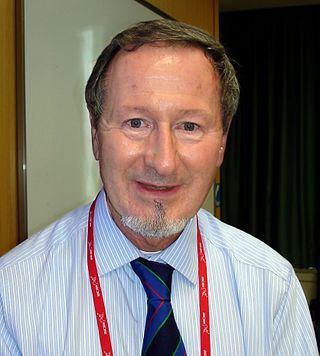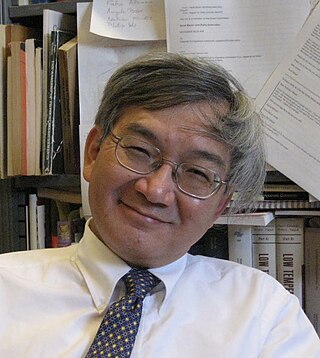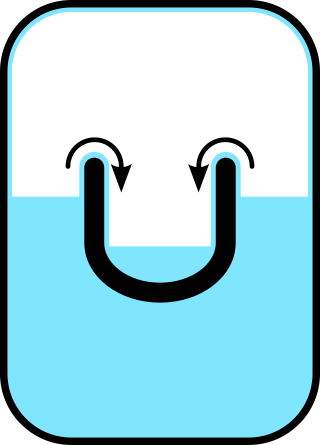
Condensed matter physics is the field of physics that deals with the macroscopic and microscopic physical properties of matter, especially the solid and liquid phases that arise from electromagnetic forces between atoms and electrons. More generally, the subject deals with condensed phases of matter: systems of many constituents with strong interactions among them. More exotic condensed phases include the superconducting phase exhibited by certain materials at extremely low cryogenic temperatures, the ferromagnetic and antiferromagnetic phases of spins on crystal lattices of atoms, the Bose–Einstein condensates found in ultracold atomic systems, and liquid crystals. Condensed matter physicists seek to understand the behavior of these phases by experiments to measure various material properties, and by applying the physical laws of quantum mechanics, electromagnetism, statistical mechanics, and other physics theories to develop mathematical models and predict the properties of extremely large groups of atoms.
Superfluid helium-4 is the superfluid form of helium-4, an isotope of the element helium. A superfluid is a state of matter in which matter behaves like a fluid with zero viscosity. The substance, which looks like a normal liquid, flows without friction past any surface, which allows it to continue to circulate over obstructions and through pores in containers which hold it, subject only to its own inertia.

In physics, a state of matter is one of the distinct forms in which matter can exist. Four states of matter are observable in everyday life: solid, liquid, gas, and plasma. Many intermediate states are known to exist, such as liquid crystal, and some states only exist under extreme conditions, such as Bose–Einstein condensates and Fermionic condensates, neutron-degenerate matter, and quark–gluon plasma. For a list of exotic states of matter, see the article List of states of matter.

Liquid helium is a physical state of helium at very low temperatures at standard atmospheric pressures. Liquid helium may show superfluidity.

In theoretical physics, a roton is an elementary excitation, or quasiparticle, seen in superfluid helium-4 and Bose–Einstein condensates with long-range dipolar interactions or spin-orbit coupling. The dispersion relation of elementary excitations in this superfluid shows a linear increase from the origin, but exhibits first a maximum and then a minimum in energy as the momentum increases. Excitations with momenta in the linear region are called phonons; those with momenta close to the minimum are called rotons. Excitations with momenta near the maximum are called maxons.

In condensed matter physics, a supersolid is a spatially ordered material with superfluid properties. In the case of helium-4, it has been conjectured since the 1960s that it might be possible to create a supersolid. Starting from 2017, a definitive proof for the existence of this state was provided by several experiments using atomic Bose–Einstein condensates. The general conditions required for supersolidity to emerge in a certain substance are a topic of ongoing research.

Douglas Dean Osheroff is an American physicist known for his work in experimental condensed matter physics, in particular for his co-discovery of superfluidity in Helium-3. For his contributions he shared the 1996 Nobel Prize in Physics along with David Lee and Robert C. Richardson. Osheroff is currently the J. G. Jackson and C. J. Wood Professor of Physics, emeritus, at Stanford University.
A quantum fluid refers to any system that exhibits quantum mechanical effects at the macroscopic level such as superfluids, superconductors, ultracold atoms, etc. Typically, quantum fluids arise in situations where both quantum mechanical effects and quantum statistical effects are significant.

David Morris Lee is an American physicist who shared the 1996 Nobel Prize in Physics with Robert C. Richardson and Douglas Osheroff "for their discovery of superfluidity in helium-3." Lee is professor emeritus of physics at Cornell University and distinguished professor of physics at Texas A&M University.

Robert Coleman Richardson was an American experimental physicist whose area of research included sub-millikelvin temperature studies of helium-3. Richardson, along with David Lee, as senior researchers, and then graduate student Douglas Osheroff, shared the 1996 Nobel Prize in Physics for their 1972 discovery of the property of superfluidity in helium-3 atoms in the Cornell University Laboratory of Atomic and Solid State Physics.
Victor John Emery was a British specialist on superconductors and superfluidity. His model for the electronic structure of the copper-oxide planes is the starting point for many analyses of high-temperature superconductors and is commonly known as the Emery model.

Olli Viktor Lounasmaa was a Finnish academician, experimental physicist and neuroscientist. He was known for his research in low temperature physics, especially for experimental proof of the superfluidity of helium-3 and also for his work in the field of magnetoencephalography.

Jan Zaanen was a Dutch professor of theoretical physics at Leiden University. He is best known for his contributions to the understanding of the quantum physics of the electrons in strongly correlated material, and in particular high temperature superconductivity. Zaanen's areas of interest were in the search for novel forms of collective quantum phenomena realized in systems built from mundane constituents like electrons, spins, and atoms.

Moses Hung-Wai Chan is a Chinese-American physicist who is Evan Pugh Professor at Pennsylvania State University. He is an alumnus of Bridgewater College and Cornell University, where he earned his Ph.D. in 1974 and was a postdoctoral associate at Duke University. He has been a professor at Penn State's University Park Campus since 1979.
John David Reppy is a physicist and the John L. Wetherill Professor of Physics Emeritus at Cornell University. He studies the quantum properties of superfluids such as helium.

Superfluidity is the characteristic property of a fluid with zero viscosity which therefore flows without any loss of kinetic energy. When stirred, a superfluid forms vortices that continue to rotate indefinitely. Superfluidity occurs in two isotopes of helium when they are liquefied by cooling to cryogenic temperatures. It is also a property of various other exotic states of matter theorized to exist in astrophysics, high-energy physics, and theories of quantum gravity. The theory of superfluidity was developed by Soviet theoretical physicists Lev Landau and Isaak Khalatnikov.
Allan H. MacDonald is a theoretical condensed matter physicist and the Sid W. Richardson Foundation Regents Chair Professor of Physics at The University of Texas at Austin. He was born in Antigonish, Nova Scotia, Canada, and attended local schools completing a B.S. at St. Francis Xavier University in 1973. He completed his Ph.D.in physics at The University of Toronto in 1978, working with S.H. Vosko on relativistic generalizations of density functional theory, and on the application of density functional theory to magnetism in metals.

Horst Meyer was a Swiss scientist doing research in condensed matter physics.
Francesca Ferlaino is an Italian-Austrian experimental physicist known for her research on quantum matter. She is a professor of physics at the University of Innsbruck.
William P. Halperin is a Canadian-American physicist, academic, and researcher. He is the Orrington Lunt Professor of Physics at Northwestern University.












